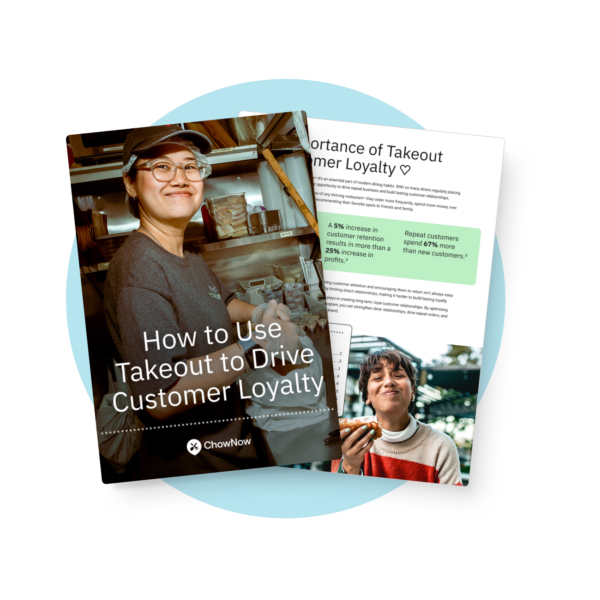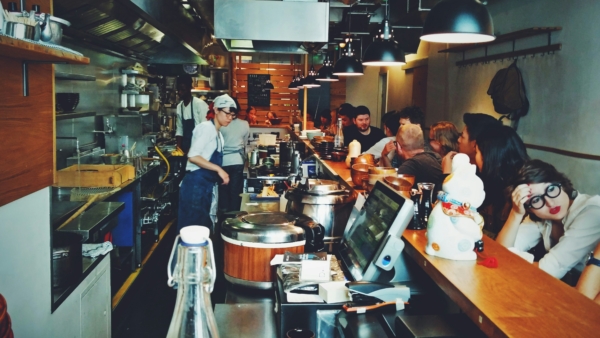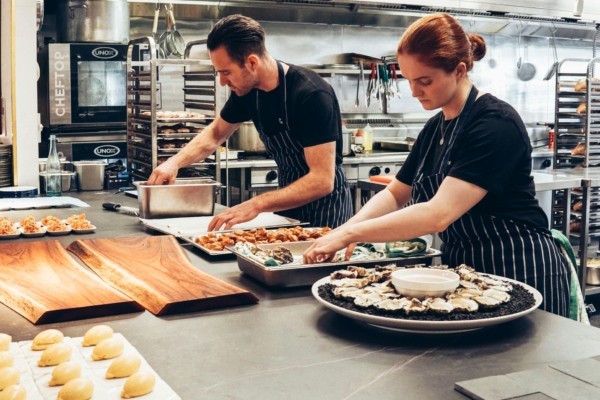Restaurant Customer Acquisition Cost: What It Is and How to Optimize It

Restaurant customer acquisition cost boils down to two things:
- How much you’re spending to market your restaurant
- How many new customers you’re actually getting from those marketing costs
Most restaurant operators are solid on the first part. They create marketing campaigns, post content on social media, and send out email blasts—then cross their fingers and hope for the best.
What often gets skipped is the follow-through: tracking whether those marketing efforts actually led to new customers, and what it cost to get them there.
This is known as your customer acquisition cost (CAC)—a straightforward way to measure how effective your marketing expenses are at converting new customers.
Once you know your CAC, you can see what’s working and what’s not, so you can adjust your marketing strategy and make better use of your time, money, and resources.
In this article, you will learn:
- How to calculate your customer acquisition cost step by step
- Why CAC matters for profit, growth, and customer lifetime value
- Simple strategies to lower your acquisition costs without sacrificing quality
What Is Restaurant Customer Acquisition Cost (CAC)?
Customer acquisition cost (CAC) is the amount you spend to bring in a single new customer.
For restaurants, this includes what you spend on things like social media ads, email marketing, and any other marketing campaigns aimed at getting more people in the door or ordering online.
The basic customer acquisition cost formula is:
CAC = Total Marketing Spend ÷ Number of New Customers Acquired
To calculate your customer acquisition cost, take your total marketing spend over a set period (this includes things like ads, promotions, and agency fees) and divide it by the number of new customers you brought in during that same time.
Tracking this number over time helps you spot trends, compare the performance of different marketing channels, and identify when a particular marketing strategy is giving you a good return or eating into your profits.
How to Calculate Customer Acquisition Cost for Your Restaurant
Here is a breakdown of what to include when calculating your marketing spend and how to accurately measure new customers.
What to Include in Marketing Spend
Start by adding up everything you’ve spent on marketing efforts over a particular time period—usually a month or a quarter. This can include:
- Social media ads (Facebook, Instagram, TikTok, etc.)
- Google ads or other pay-per-click campaigns
- Email marketing software or services
- Direct mail campaigns or printed flyers
- Payments to agencies or freelancers
- Promotions or influencer partnerships
- Discounts or coupons given as part of a marketing campaign
If you’re not sure what to include, ask: Was this cost directly tied to bringing in more guests?
If yes, add it in when calculating your CAC.
How to Measure New Customers Accurately
Now, you need to figure out how many new customers you actually brought in during that same period.
Ideally, you want to avoid counting existing customers who returned and focus only on newly acquired customers.
Online ordering systems, point-of-sale systems and CRM tools can help you track this data more reliably.
Plug Your Numbers Into the Formula
Once you’ve got your totals, plug them into the customer acquisition cost formula:
CAC = Total Marketing Costs ÷ Number of New Customers
For example, let’s say you spent $3,000 on marketing efforts last month and brought in 150 new customers.
$3,000 (marketing costs) ÷ 150 (new customers)= $20 CAC per customer.
Why Customer Acquisition Cost Matters
Your customer acquisition cost is a direct reflection of the efficiency and sustainability of your marketing efforts.
When CAC is low, your marketing efforts are working well. When it’s high, it can seriously eat into your total sales and profit margins.
It’s Tied to Profitability
Let’s say your customer acquisition cost is $25, but the average first-time customer only spends $15. That means you’re losing money with every person you bring in.
If your acquisition costs consistently outweigh the revenue your customers bring in, you’re operating at a loss even if your dining room is full.
It Helps You Protect Long-Term Growth
Marketing plays a big role in restaurant growth, but if your marketing efforts cost more than what your new customers bring in, you’ll grow your customer base without growing your bottom line.
Over time, that makes it harder to reinvest in your team, your space, or better tools.
Keeping your customer acquisition cost in check ensures that growth actually leads to stronger margins, not just more orders with less profit.
You Need It to Compare With Customer Lifetime Value
To really understand whether your CAC is “good” or not, compare it to your customer lifetime value (CLV).
This tells you how much revenue a customer brings over time through repeat visits and more frequent visits.
If it costs $20 to bring someone in and they only spend $25 total, that’s not a great return. But if they become a regular and spend $300 over time, a $20 CAC is a win.
That ratio—customer acquisition cost vs. lifetime value—is key to knowing whether your marketing strategy is actually working or just expensive.
It Helps You Measure and Improve ROI
Once you’ve calculated your customer acquisition cost, you can start measuring how efficient your marketing efforts really are and which marketing channels are driving results.
Tracking CAC over time gives you a clear benchmark.
If your acquisition costs are going up without a return in new customers, that’s a sign something in your marketing strategy needs to change.
On the other hand, improving your CAC (even by a few dollars) can mean stronger margins and more efficient growth.
Some sources put the average customer acquisition cost for restaurants between $30-$80, but that number can vary widely depending on concept, location, and marketing mix.
What matters most is tracking your own results and using CAC to guide smarter decisions for your marketing goals.
What CAC Can Tell You About Your Restaurant
From a broad perspective, customer acquisition cost tells you about the health and efficiency of your restaurant marketing. It gives you a clear insight into your overall marketing strategy, audience targeting, and long-term growth potential.
But when you zoom in, CAC can reveal more actionable details.
Which Marketing Channels Are Most Effective
Tracking CAC across different marketing channels helps you figure out where to focus.
Maybe your Google Ads bring in new customers for $10 each, but your direct mail efforts cost $40 per customer.
These numbers give you the valuable insights you need to double down on high-performing customer acquisition efforts.
When It’s Time to Shift From Acquisition to Retention
If your CAC is climbing, it might be time to focus less on acquiring customers and more on keeping the ones you have.
Investing in customer retention through a loyalty program, targeted offers, or consistent email marketing can help you drive more revenue at a significantly lower cost than chasing new traffic.
If You’re Targeting the Right Audience
If your CAC is unusually high, it could mean you’re spending too much trying to attract the wrong potential customers.
Maybe your social media ads are getting clicks but not conversions. Or maybe you’re offering discounts that attract bargain hunters instead of loyal customers.
Use CAC as a feedback loop to refine your marketing ideas and messaging.
Restaurant Customer Acquisition Cost Frequently Asked Questions
What is a good customer acquisition cost for a restaurant?
There’s no universal number, but a good customer acquisition cost is one that makes sense relative to your margins and your customer lifetime value. Some industry estimates say it’s between $30-$80 per new customer, but your goal should be to track your own baseline and work to lower it over time.
How does customer acquisition cost compare to customer lifetime value?
Customer acquisition cost only tells you what it takes to get someone in the door. To know if it’s worth it, you need to compare it to customer lifetime value—how much that guest spends with you over time.
If it costs $25 to acquire someone who only visits once, that’s a problem. But if that same guest becomes a regular and spends $200 over a year, your CAC is working.
Should I calculate customer acquisition cost monthly or quarterly?
That depends on how frequently you’re running marketing campaigns. Monthly works if you’re doing a lot of short-term promotions or digital ads. Quarterly makes more sense for longer campaigns or if you’re just starting to track CAC. The key is to stay consistent so you can spot trends and improve over time.
How do delivery apps and third-party services affect CAC?
Third-party platforms might bring in new customers, but they come with a much higher acquisition cost, often 20–30% of each order. You’re essentially renting that customer, with little control over the relationship or long-term value.
Alternatively you can invest in commission free direct ordering channels you own. Tools like ChowNow help you drive customer acquisition and retention without paying a premium on every transaction.
Next Steps for Lowering Your Customer Acquisition Cost
Understanding your restaurant customer acquisition cost is just the first step—now it’s time to take action. Start testing smarter marketing strategies, track performance closely, and shift focus toward retention to lower CAC and boost long-term profitability.
Contact ChowNow to learn how customer retention tools like a Rewards Program and Automated Email Marketing can help you keep your restaurant’s customer acquisition cost low and still grow your business.






